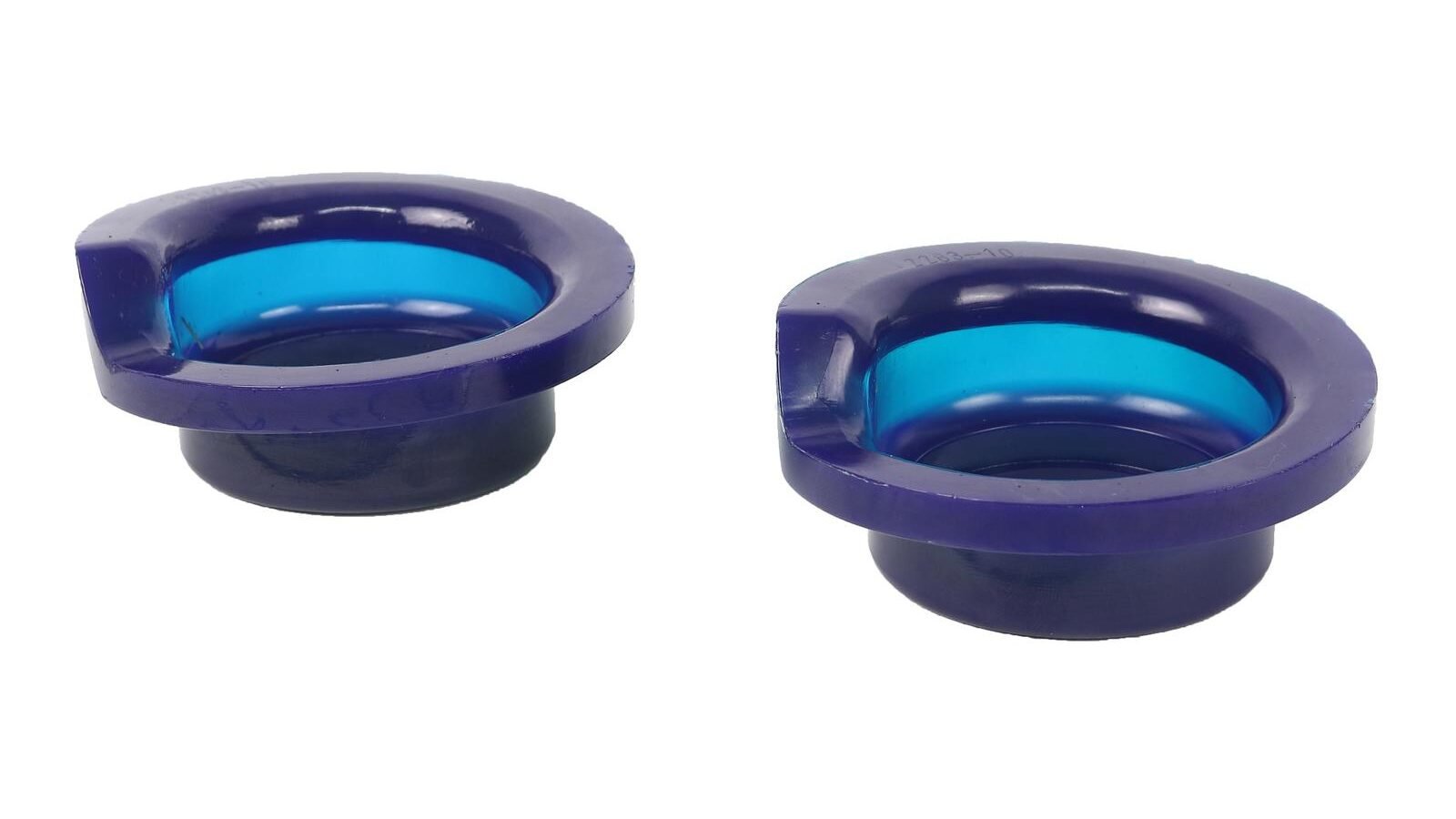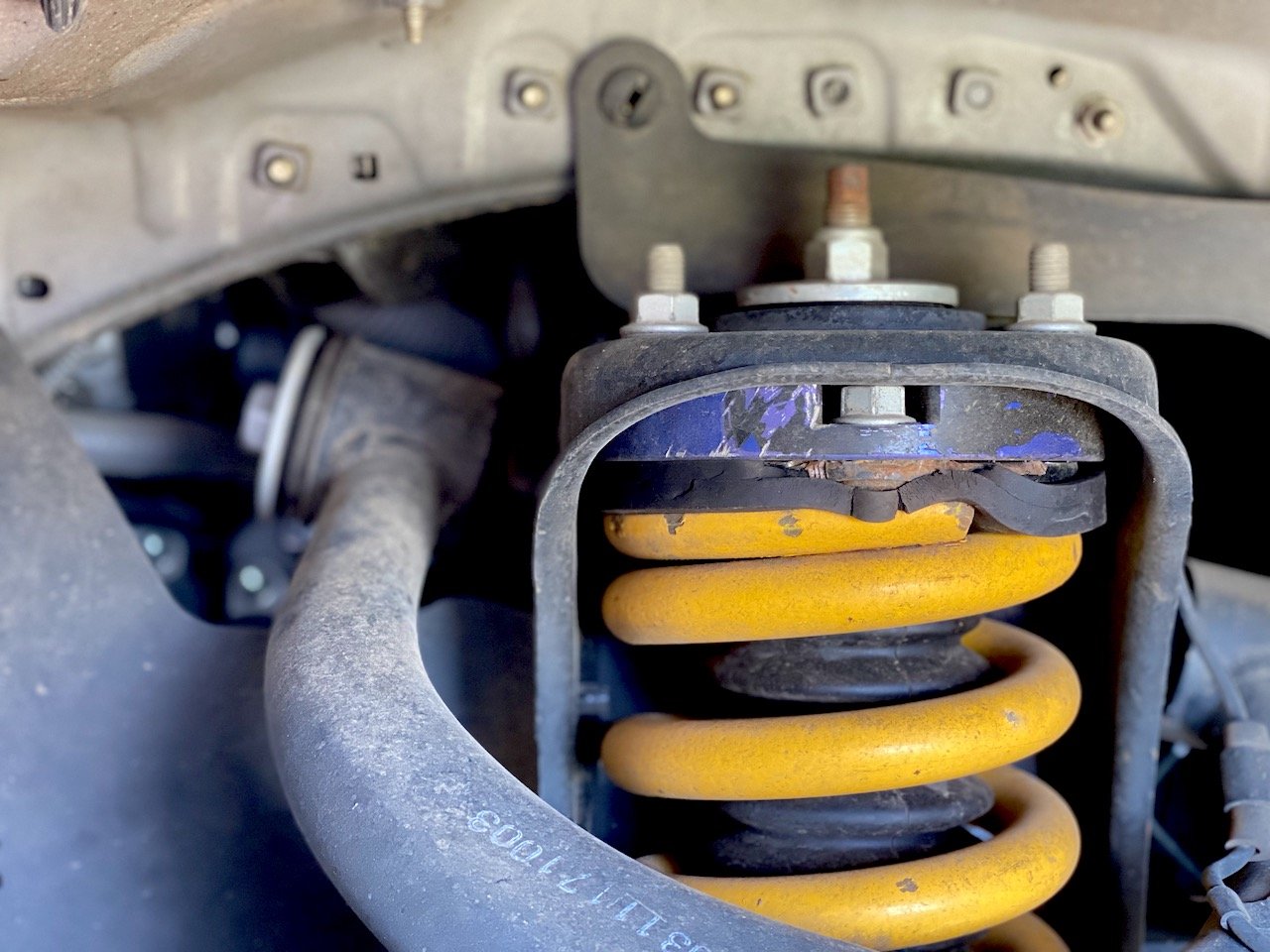Spring spacers for 4X4: Are they legal and worth buying?
The pros and cons of spring spacers: are they legal in Australia, when do they make sense, and what issues can they cause your 4X4?
Advertisement
So your 4X4 needs a bit of a lift, but you don’t want to (or can’t yet afford) a completely new suspension system. Don’t worry, there are options available. One inexpensive way to improve the look of your vehicle is to use spring spacers. They work by levelling it out or allowing the fitment of bigger (taller) tyres.
We’ve shared the ins and outs of spring spacers, including whether they’re legal in Australia, why you might fit them and some of the issues they may cause.

Yes, spring spacers are legal in Australia, insofar as there is nothing within VSB14 stating that they’re illegal. If you want to know more about vehicle modifications, then VSB14 is the document for you. LS Section is where you’ll want to go for suspension rules.
However, what you can’t do is use extended shackles on leaf packs. They’re frowned upon by, well, pretty much everyone. Despite the fact they do essentially the same as a coil spacer, the springs just move around a lot more.
While VSB14 doesn’t explicitly ban spring spacers, there’s an important distinction to make. Quality-engineered spacers from reputable manufacturers are vastly different from cheap, unbranded units you might find online. Some states interpret the rules more strictly than others, and poorly engineered spacers can fail roadworthy inspections.
The issue isn’t whether spacers are legal—it’s whether the specific spacers you’re fitting are properly designed for your vehicle and meet the required standards. This is why buying from established brands like Ironman, SuperPro, EFS, or RoadSafe matters. They’ve done the engineering work to ensure their products comply with regulations and won’t compromise your vehicle’s safety.
Spring spacers are discs that sit on top of your springs in a coil-equipped vehicle. Whether a solid-axle coil-sprung 4X4 or an IFS rig with coil-over-strut set-ups, they work under the same principle. As the name suggests, they space your spring down a set amount from the spring seat. This equates to lift on your four-wheel drive. They usually come in sizes ranging from 25-50mm, unless you’re in the U.S. and you have 12-inch spring spacers. They’re cheap, easy to fit, and a solid alternative to changing out springs.
They’re usually made from metal, rubber, or polyurethane, with the obvious advantage of each going along with it. Namely that the metal ones are absolutely solid, the rubber ones are a bit squishy but don’t rust, and the polyurethane ones are essentially in between and don’t rust either. Aside from their longevity, the main difference comes down to price.

Spacers are often used to add a touch of lift (say 25mm), and they achieve this without changing the spring rates of your current suspension. What they don’t give you is any extra wheel travel. However, they are useful for levelling your vehicle or if you’re looking for a cheap (first step) in building up your vehicle and have fitted taller tyres and need some extra clearance.
Due to being a pretty solid material, they’re a guaranteed height/lift amount. They’re easy to install, and are rather versatile in how and what you can use them with. Unfortunately, they’re not perfect, and there’s a reason for that. It is true that spacers are generally used as a first step in a vehicle build, but nothing beats a perfectly designed and tailored suspension set-up to suit your vehicle.
Spring spacers work well for specific situations. They’re ideal for levelling your ute after fitting a bull bar and winch, where front sag is common. A 20-25mm spacer up front can restore your vehicle’s factory stance without changing your carefully selected rear springs.
They also make sense for fine-tuning ride height when you’re 15-20mm off where you want to be, or as a temporary solution while you’re saving for a complete suspension upgrade. For budget builds where you’re planning a full kit later, spacers can get you on the road with slightly larger tyres in the meantime.
However, spring spacers are the wrong choice if you’re trying to compensate for sagging springs—replace the springs instead. They won’t improve off-road performance because you’re not gaining wheel travel. If you’re lifting more than 25-30mm, the risks start to outweigh the benefits. And if your vehicle already has aftermarket suspension, consult the manufacturer before adding spacers, as it may void warranties or create unforeseen issues.
Spring spacers have the same issues as a full suspension upgrade, in that you can bust CV’s, struts, upper control arms (UCA), ball joints and suspension geometry. The whole lot of it, if you don’t do it properly.
Where this becomes an issue is that with a proper high-quality suspension kit, you may well get a diff-drop kit, extended brake lines and adjustable UCAs… the works. This will make sure everything works exactly as it should. But they’re rather expensive, especially when you put them against a set of $100 spacers. So if you are going to throw a set of spacers in, make sure you’re thinking about the accompanying mods to go along with them.

Not all spring spacers are created equal, and this is where things can go wrong. When shopping for spacers, material choice matters significantly. Aluminium spacers from brands like SuperPro and Ironman offer superior durability and consistent performance compared to cheap rubber alternatives that can compress over time.
The attachment method is critical for safety. Your spacers must secure firmly to the spring tower—spacers that simply sit loose on top of the coil can fall out, creating a dangerous situation. Stick with established brands like Ironman, EFS, RoadSafe, and SuperPro that have proven track records and proper engineering documentation.
Vehicle-specific design is another crucial factor. Generic “one-size-fits-all” spacers can cause fitment issues and compromise your suspension geometry. Look for spacers specifically designed for your make and model. Finally, keep all purchase receipts and documentation—you’ll need proof of quality branded products if questioned during a roadworthy inspection.
While VSB14 provides the national framework, individual states have their own interpretations worth knowing about. Victoria and NSW both allow a 75mm combined lift—that’s 50mm from suspension modifications plus 25mm from larger diameter tyres—without requiring certification. Queensland has a similar 75mm allowance, but only for vehicles with MC or NC classification.
Regardless of your state, the quality and engineering of your spacers matter for roadworthy compliance. Cheap, unbranded spacers are more likely to fail inspections, not because spacers themselves are illegal, but because they may not meet safety standards or be properly engineered for your specific vehicle. Always check with your state’s transport authority for the most current regulations, and keep all receipts showing brand names and specifications.
At the end of the day, which way you go will depend on a few factors like what you’re actually trying to achieve. Think about cost, ride height, use, ride quality and just simply levelling out your four-wheel drive. But you’ll also need to consider the potential risks involved, like damage to other componentry, coils fouling on control arms, CV joints being over-stressed and more.
Essentially, what you’re gaining on one hand (a bit of extra room for taller tyres) you’re taking away with the other because you’re messing with the suspension’s travel. This can upset your vehicle’s ride and handling.
Spring spacers aren’t inherently bad—they’re just frequently misused. For a 20mm front level after fitting a bull bar? They’re perfect. For a 50mm lift with 33-inch tyres? You’re asking for trouble.
The best approach is to load up your four-wheel drive as if you’re about to go away, or with a ‘normal’ load in it, and take it into your local quality suspension mob. Sit down with them to get the right springs and shocks off the bat. Even if you’re not having a full suspension upgrade, it’s worth discussing your vehicle with a reputable suspension specialist about whether spacers will work and which type to buy.
They’ll help you choose the correct size and brand, identify if you need extended brake lines, check for potential CV or diff-drop issues, and ensure your insurance and roadworthy compliance. Spending 30 minutes with a suspension expert now can save you thousands in broken CVs, failed roadworthy inspections, or worse—an accident because your vehicle handles differently than you expected.
Bigger tyres, bigger problems? Understanding tyre regulations